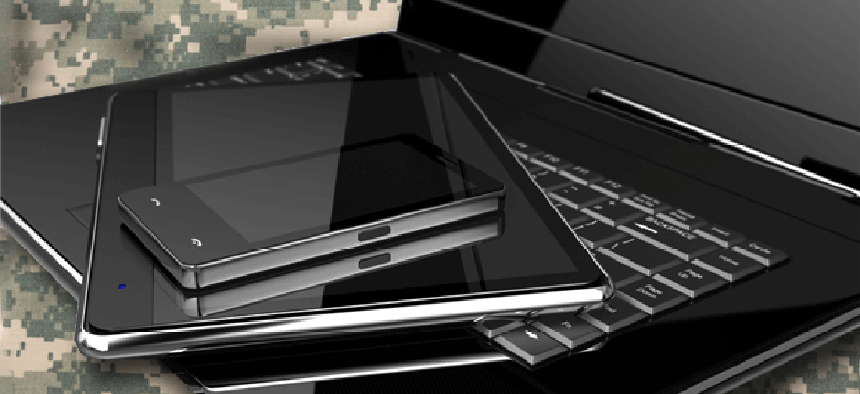Step two of DOD's mobile strategy outlines pilot projects


Connecting state and local government leaders
The recently released Commercial Mobile Device Implementation Plan lists a range of pilots that could have an impact on the goals of the Mobile Device Strategy.
In June 2012 the Defense Department’s Office of the Chief Information Officer released the DOD Mobile Device Strategy, a broad-based plan that covers three goals DOD wants to achieve: improving its infrastructure, implementing mobile device management (MDM) policies and developing mobile and Web-based applications.
DOD Component Mobility Pilots
Unclassified CMD Capability
- Army App Store
- Connecting Soldiers to Digital Apps initiative
- Navy's Digital Sea Bag
- Air Force's Warfighter’s Edge
- Air Force's Electronic Flight Bags
- U.S. Northern Command's ONE Mobile Application
- Telemedicine and Advanced Training Research Center’s mCare Initiative
- Defense Advanced Research Projects Agency’s Fixed Wireless at a Distance
Classified CMD Capability
- Navy's 4G LTE Sea Trial
- U.S. Special Operations Command's SECRET BlackBerry
- Marines' Trusted Handheld
- DARPA's Secure iPad
- Defense Information Systems Agency's Multi-Level Security Joint
- Capability Technology Demonstration (JCTD)
- DISA's JO-LTE-D TACTICS JCTD (broadband to the tactical edge)
- National Security Agency's TIPSPIRAL
Recently the CIO's office released its Commercial Mobile Device (CMD) Implementation Plan, which "establishes the framework to equip users and managers with mobile solutions that leverage commercial off-the-shelf products, improve functionality, decrease cost, and enable increased personal productivity," the plan stated.
Part of the process outlined in the implementation plan calls for DOD to evaluate the 16 Component Mobility Pilot programs for how the proposed technologies impact DOD mobility services.
One of the pilots that will help DOD achieve the first goal of improving infrastructure the most is the Navy’s 4G LTE inter-ship trial, implemented by the Naval Air Systems Command (NAVAIR) and contracted to Oceus Networks. The two ships that took part in the pilot — the USS Kearsarge and the USS San Antonio — are now on their way to field use in the Persian Gulf. Once this technology is introduced to more warships and aircraft, the broadband capability of mobile device users at sea will increase, contributing to a drastic increase in mobile infrastructure as prescribed in the Implementation Plan.
In another pilot addressing the second goal of MDM, the Air Force chose iPads to replace flight bags — the set of manuals and instructions needed on-board for use in nearly any contingency — which will save not only fuel but more importantly time, which can become critical in an emergency. The decision to go with an authorized Apple vendor for iPad 2 devices was a case of picking the tool officials felt would suit the job best.
DOD is going to take a close look at the Army’s app store, a pilot program that addresses the third goal of the strategy. The app store is an exhaustive collection of apps and mobile websites containing training and other tools for soldiers.
The timeline included with the implementation plan has DOD already mostly through Phase 1, which covers assessment of current capabilities in operation, as well as the above-mentioned pilot programs. Phase 2 should begin in April and will focus on infrastructure creation and reinforcement. Phase 3, which addresses operational capability, is set to commence in October of this year.




